Recent Storm Damage Posts
How To Prepare Your Building for a Severe Storm
4/4/2022 (Permalink)
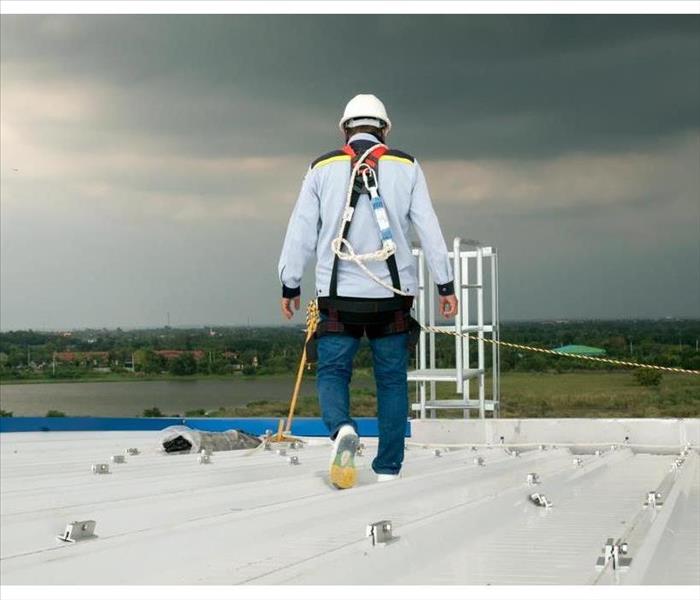 Roof inspection in Chalfont, PA.
Roof inspection in Chalfont, PA.
Storm Preparedness
When a severe storm is on its way in Chalfont, PA, it is essential to protect various parts of your building to reduce potential damage. Storm preparedness can help your building withstand the fiercest weather conditions.
Inspect the Roof
Your roof protects your entire building and the people inside it. Scheduling routine roof inspections and repairs is a critical aspect of property management to prevent costly storm damage. A fragile roof under the weight of heavy snow or rain, or with exposure to strong winds, can ultimately lead to:
- Interior flooding
- Structural damage
- Property loss
- Mold problems
It is also prudent to remove any objects from a roof that can cause damage elsewhere if they are carried away by strong winds.
Clear the Property Grounds
All unsecured objects, including signs, outdoor furniture, stones and tree branches should be removed from the ground near your property immediately following a severe storm warning. Strong winds can hurl these objects through glass windows and doors or deposit them on your building's roof causing cracks.
Acquire a Generator
Many storms lead to widespread power outages which can negatively impact your business. Purchasing and maintaining a generator is vital to your storm preparedness plan and will ensure that your business continues to operate despite a loss of electricity.
Install Lightning Protection
Lightning that strikes your building can cause a fire, property loss or injury, and interrupt vital services. Thorough property management in storm-prone regions includes installing a lightning protection system that can reduce these risks.
Gather Insurance Details
Keep insurance details in an easily accessible place to prevent delays that could affect your coverage following storm damage. A disaster recovery service can help coordinate all post-storm cleanup efforts with your insurance provider.
Plan Communication Options
Lack of communication can make your building's residents anxious as they await guidance. Consider designating team members to communicate with tenants in each building section or installing an automated emergency alert system to send vital updates.
Storm preparedness can minimize the damage to your business following a severe storm in Chalfont, PA.
How To Prepare For a Flood If You Live in a Flood Zone
1/8/2022 (Permalink)
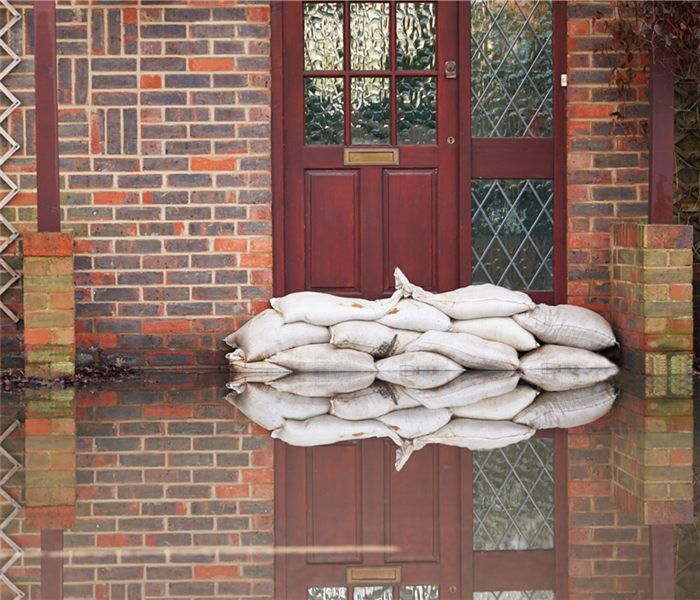 Prepare your home in case of flood damage.
Prepare your home in case of flood damage.
Protect Your Home From a Flood and Financial Security
Many homeowners may assume that their homes are safe from floods if they live away from coastal areas and large lakes and rivers. However, no residence is immune from this potentially devastating threat. To assess your home’s risk, access your community’s flood map on the FEMA NFIP website. If you reside in an area vulnerable to flooding, there are several steps you can take to help protect both your home and your financial security.
Purchase Flood Insurance
One of the best ways to protect yourself from potentially devastating flood damage is to purchase a flood insurance policy. Home insurance policies do not typically cover this peril. Without coverage, you may have to fund expensive cleanup and restoration costs out-of-pocket. If you have questions regarding flood insurance, you should contact your insurance company. You may also find useful information on the FEMA NFIP website.
Be Prepared
To help minimize potential flooding damage, homeowners residing in flood zones should safeguard vital equipment and have essential tools readily available. Adequate preparation should include the following initiatives:
- Elevating HVAC equipment off the basement floor
- Purchasing a sump pump and hose
- Having a functioning backup power source accessible
- Preparing sandbags or obtaining a reusable flood deterrent device
Accomplishing these steps may divert floodwaters away from your home, protect essential equipment from extensive damage if flooding does occur, and help you quickly drain standing water out of your house.
Complete Home Maintenance Procedures
As an additional safeguard, every homeowner in New Briton, PA, should also complete routine maintenance procedures, such as clearing debris from gutters. If you have a basement, you should also check for cracks and holes in the walls and promptly fix any existing issues.
Be Proactive
The FEMA NFIP website offers useful tools that can help educate homeowners about both specific flood risks and flood insurance. Although it may be impossible to fully eliminate your home’s flood risk, completing appropriate proactive measures may help minimize flooding damage or allow you to avoid costly out-of-pocket expenses. Taking preemptive action is particularly essential if you live in an area susceptible to flooding.
3 Things You Must Do To Repair Your Business’s Leaky Roof
11/23/2021 (Permalink)
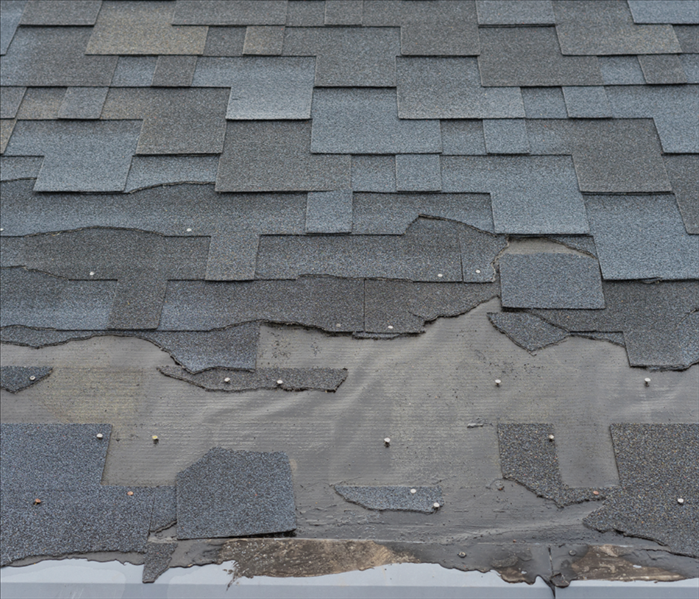 Strong winds and heavy rain can result in missing shingles.
Strong winds and heavy rain can result in missing shingles.
Three Things You Must Do To Repair Your Company's Leaky Roof
If your business in New Brighton, PA experiences a roof leak, it’s important to start the cleanup process immediately. However, you may be uncertain about how to stop further damage and clean up the area. There are several steps you should take to make sure your damaged roof is properly fixed.
1. Remove Wet Materials
As soon as you become aware of a roof leak, it’s important to remove any materials that are wet. Rugs and other items made of cloth are often breeding grounds for mold to grow and moving out anything that has been damaged is necessary to prevent mold growth. By moving all wet items out of the affected area, the cleanup process can happen more quickly and efficiently.
2. Dry and Clean the Area
Once all wet items and materials have been taken out of the affected area, the next step is to focus on drying and cleaning what has not been badly damaged. Depending on the amount of damage sustained, it might be necessary to replace carpeted floors, damaged inventory or other items entirely. However, it is often possible to disinfect items after they have been dried. Floors, walls and other areas can be disinfected with special products as long as they are not badly damaged.
3. Make Needed Repairs
When everything has been dried and it is safe to do so, restoration is the final step to fixing your roof. Unfortunately, a leaking roof often occurs in conjunction with other issues. A combination of strong winds and heavy rain can result in missing shingles, holes in the roof or other problems. To prevent further damage to your building, the structure of your business’s roof will need to be fixed.
A roof leak doesn’t have to cause your business to close its doors if you quickly act as soon as you notice a leak. Working with professionals in water damage restoration will ensure that your business’s roof is fully restored.
6 Ways to Reduce Your Home’s Flood Risk
9/16/2021 (Permalink)
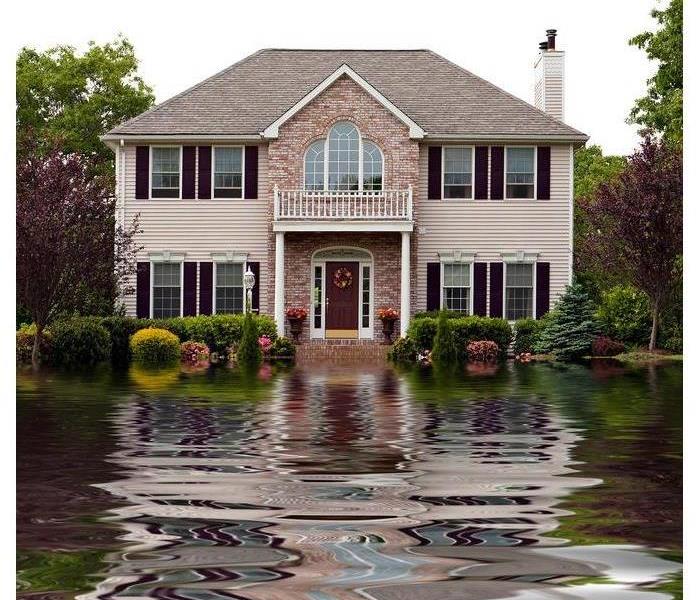 Following these seven flood safety tips helps reduce your home’s flood risk.
Following these seven flood safety tips helps reduce your home’s flood risk.
Floods are often unavoidable. Although you may not be able to fully flood-proof your home, every homeowner in Doylestown, PA, can take proactive prevention and flood safety measures to protect their properties against extensive flood damage.
1. Prepare Sandbags
If you receive adequate warning of an approaching storm capable of producing significant rainfall, such as a hurricane, create an external barrier with sandbags, which can divert water from your residence.
2. Install a Sewage Water Backstop and a Sump Pump
A sewage water backstop is an efficient flood safety device that prevents backwater from flowing into your basement. A sump pump is another beneficial machine that can drain water out of your home.
3. Assess Basement Windows and Your Foundation
A cracked foundation may enable water to flow inside your basement. Water can also seep through basement windows. To secure these areas, ensure that windows are properly caulked and sealed and repair any existing foundation issues.
4. Maintain Gutters
Routinely clean your gutters to prevent blockages that may restrict water flow. In addition, install downspout extensions to direct water farther away from your home’s foundation.
5. Plant Grass and Use Mulch
Both mulch and grass absorb water. So planting grass around your home and placing mulch around external foliage provides an additional flood safeguard. However, to ensure retained moisture does not damage siding, keep mulch at least six inches away from your home’s exterior.
6. Properly Grade Soil
Grading the ground away from your home is another efficient safety tip that also helps divert water away from your foundation.
Peace of Mind
Following these seven flood safety tips helps reduce your home’s flood risk. However, it is impossible to fully eliminate the threats of extreme weather and bursting pipes. For this reason, the best flood safety measure is a flood insurance policy, which provides financial security and ensures that you have funds available to cover cleanup and restoration costs and replace destroyed property.
3 Ways Hail Can Cause Damage to Your Commercial Building’s Roof
8/10/2021 (Permalink)
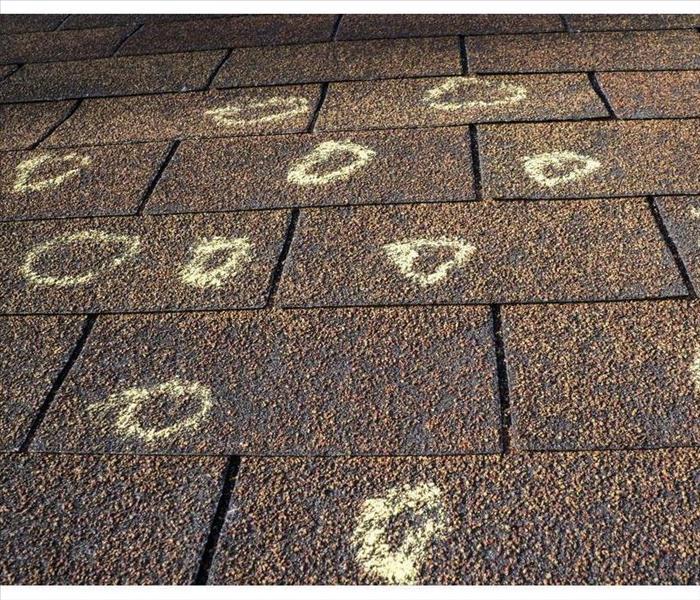 Hail damage on roof.
Hail damage on roof.
Three Ways Hail Can Damage Your Commercial Building's Roof
Hailstorms that move through Buckingham, PA, can wreak havoc on your commercial building. One of the most common results of hail is roof damage, which might contribute to other issues like leaks and water stains on ceilings and walls. There are several ways hail can impact your building’s roof and being aware of them might help you better assess the damage the next time a storm occurs.
1. Cracked or Broken Shingles
One common result of hail damage is cracked and broken shingles. This can be especially common when the hailstones are large. Cracked shingles may allow water to seep in between the flashing or the tar paper and the roof, which may weaken those areas. Broken shingles may peel away completely and leave sections of the roof vulnerable to wind and rain. A commercial restoration service can repair and replace shingles to restore your roof’s integrity.
2. Water-Damaged Insulation
When roof damage occurs as the result of a hailstorm, melted hailstones can seep in under cracked tiles and reach insulation in your building’s attic. Over time, the insulation may weaken or begin to rot, depending on the amount of exposure. This can cause unpleasant musty odors and drafts as the insulation begins to fail. If your area experiences frequent hailstorms, you may want to have your insulation checked several times a year.
3. Increased HVAC Leaks
Large hailstones can damage your roof’s HVAC system and increase leaks each time you run it. Hail can bend or dent fan blades and impact the system’s condenser coils. An HVAC system that leaks may eventually weaken the roof surrounding it and cause water damage around the building’s interior vents. A noisy unit may clue you in to hail damage, especially if you notice new sounds after a storm.
Buckingham, PA, hailstorms can cause considerable roof damage and disrupt your business. Being aware of potential issues caused by these storms can help you be better prepared to deal with them if they should arise.
Answering 3 Common Questions About Commercial Flood Insurance
5/12/2021 (Permalink)
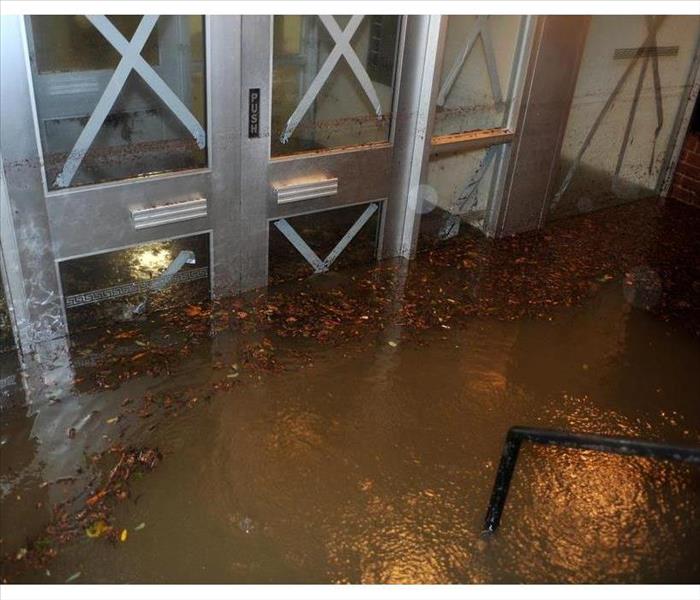 Flooded business in Chalfont, PA.
Flooded business in Chalfont, PA.
Commercial flood insurance can be a bit confusing. You have to purchase it separately from your regular property insurance. There are also some exclusions to most flood policies. Here are the answers to some common questions about this type of insurance.
What Is a Flood?
Essentially, a flood occurs when water accumulates on dry land. However, the NFIP has a more detailed definition. The NFIP describes a flood as the complete or partial inundation of water on a normally dry area that contains either two or more properties or two or more acres. It can result from mudflow, runoff, or an overflow of tidal waters. Common causes of floods include:
- Broken levees or dams
- Heavy rain
- Fast-Melting snow
- Post-hurricane storm surges
What Does This Insurance Cover?
As its name implies, flood insurance protects your property from flood damage. You can only purchase it from the NFIP, which offers up to $500,000 in-building coverage and up to $500,000 in personal contents coverage. This money can go toward emergency restoration services.
Building coverage includes harm that occurs to the actual structure, including the HVAC, plumbing and electrical systems. Contents coverage, meanwhile, pays for damage to furniture, equipment and other items inside the property.
While flood policies are fairly thorough, there are certain exceptions. Any property outside your building, including company vehicles, is typically excluded. Insurance also will not cover damage to precious metals or currency.
Who Has To Buy This Insurance?
Many business owners should consider purchasing flood coverage since it is not included in typical commercial insurance policies. However, if your company is in a high-risk flood zone and has a mortgage from an insured or federally regulated lender, you are required to purchase flood insurance.
The NFIP lets business owners purchase flood coverage for both their building and the items inside it. This insurance could keep your Chalfont, PA, company afloat following a storm.
Keeping Office Workers Safe and Productive During a Snow Storm
4/8/2021 (Permalink)
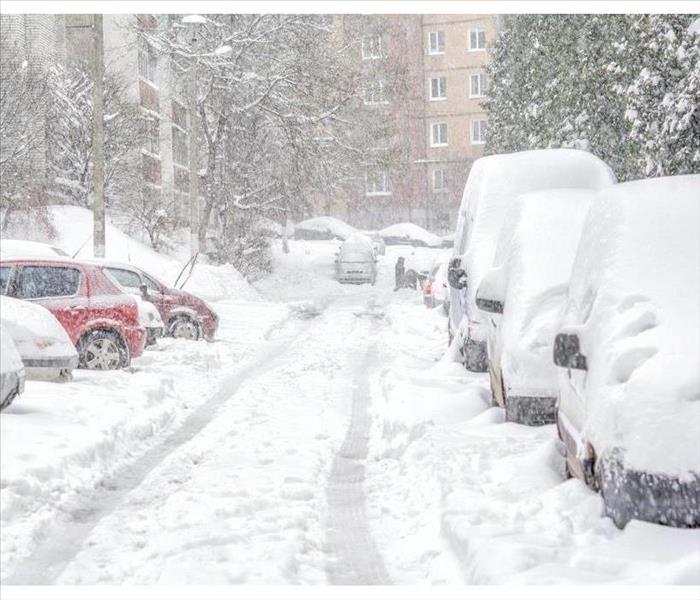 A massive snowstorm has the potential to cause severe workplace disruptions.
A massive snowstorm has the potential to cause severe workplace disruptions.
A massive snowstorm has the potential to cause severe workplace disruptions. Thankfully, technological advances have enabled offices to keep running even during inclement weather. During these times, always instruct workers to remain at home, where they can be both safe and productive.
Emergency Snow Kits
It's recommended that someone still arrive on-site in New Briton, PA, to watch for damage caused by intense freezing, such as a pipe burst. As soon as you identify a problem, contact a building repair specialist to repair the issue.
Those tasked with observing offices need winter weather emergency supplies stashed in their cars. Every vehicle needs:
- Jumper cables
- Flashlights
- Bottled water
- Sand
- Warm clothes
- Non-perishable snacks
These items can help assure safety even under the most perilous situations. Before hitting the road during a snowstorm, make sure your tank is full and your phone fully charged. These simple measures can make a world of difference.
Emergency Snow Warnings
The longer it takes to inform employees that they should remain in place, the greater the chance they will head out and fall into danger. Here are some tips for spreading the word as fast as possible.
Official storm warnings are generally issued between 12 and 24 hours before an imminent weather event. Tune into radio broadcasts and television stations with coverage that you trust and know will interrupt pre-scheduled programming. Create presets for The Weather Channel or your local weather station so you can quickly access the information you need. Install weather apps on your phone and turn on push notifications.
Have a list of everyone who works in your office. Make sure their phone numbers and email addresses are up-to-date and get in touch with them immediately after receiving news of impending winter weather.
Employees need to remain safe during a snowstorm, but they may still be able to work from home even under the snowiest conditions. With safety being the priority, early notification remains key.
3 Tips for Removing Odors Caused by Flooding
1/12/2021 (Permalink)
 Flood damage in a New Briton, PA home
Flood damage in a New Briton, PA home
Three Tips To Help You Remove Odors From Your Home After a Flood
A home that has been flooded may retain lingering odors long after the physical damage to the property has been repaired. This musty smell is often caused by mold growth but may be caused by sewage loss or other issues. These three tips will help you remove odors from your home after a flood.
1. Throw Out Items Made From Porous Materials
Flood water can seep into porous materials, such as the fabric of upholstered furniture, causing mold and bacteria to grow. It is difficult to completely dry out and clean items such as upholstery, carpet pads, and mattresses, so it is best to discard them. However, you may want to check with your insurance company before you make any final decisions on what to keep and what to salvage.
2. Remove Mold
Mold growth is one of the most common sources of musty odors after a flood. This is because mold flourishes in the sort of dark, damp conditions that exist in most flooded homes. Mold can grow on any surface of your home, including furniture, clothing, cabinets, carpets, walls, and curtains. Even your children's stuffed toys can be a fertile breeding ground. Widespread mold is difficult to eliminate without the proper equipment and training. A professional mold remediation company in New Briton, PA, can assist you with the mold removal process.
3. Clean Your Contents
If you attempted to wash and dry your water damaged contents yourself, you may have some items that look clean, but harbor mold and bacteria that is causing your odor problem. You can try cleaning them again with an anti-bacterial cleanser, but you may have more success by utilizing a professional content cleaning service. Make sure you thoroughly dry anything you clean before you bring it back in the house.
Lingering odors due to mold growth or bacteria can be an extremely frustrating consequence of flood damage. These three tips can help you remove unpleasant odors from your home.
How To Prepare Your Business for a Severe Snow Storm
12/26/2020 (Permalink)
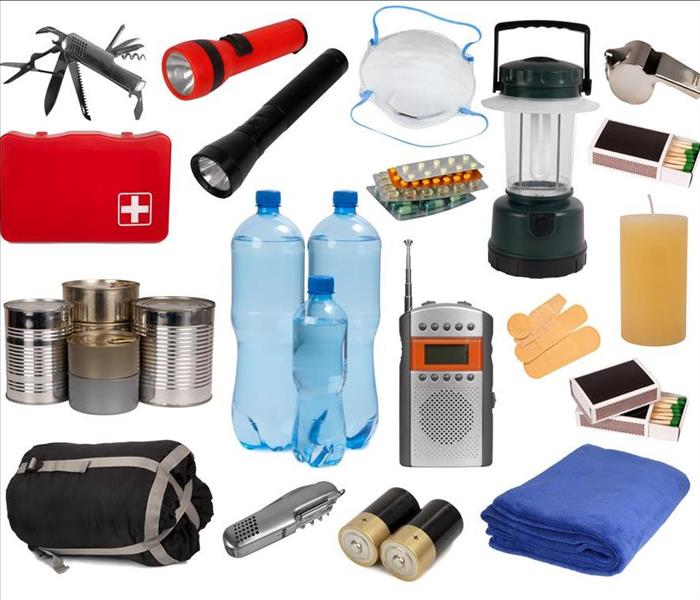 Create an emergency kit for you and your employees
Create an emergency kit for you and your employees
Here Are Some Steps To Make Sure You're Ready For The Worst
When a severe snowstorm is predicted to hit your business in Chalfont, PA, it's important to make sure you and your organization are prepared for the worst. After all, it's better to be over-prepared than under in case there is an emergency. Here are some steps to take to make sure you're ready for the worst.
1. Secure Your Building
It's important to make sure that your building is ready for the extreme cold by sealing windows and doors with caulk and weather stripping. You should also insulate your pipes and drain any exterior ones to avoid a pipe burst. Have a generator ready and inspect your carbon monoxide detectors so that you know they'll alert you if something goes wrong with your heater or generator.
2. Create an Emergency Kit
Snowstorms can knock out power lines and shut down roads, so it's important to be ready to be stuck inside your building without power. Stock up on nonperishable snacks, bottled water, flashlights and batteries, and extra blankets for you and your employees. You should also make sure your gas tank is full and you have jumper cables, a warm coat, and boots, and gloves in your car in case you need to drive in the storm.
3. Watch the News
As a snowstorm is approaching, make sure you're watching the news carefully. It might be in you and your employees' best interest to have everyone go home early or work from home if the storm is bad enough. Tell everyone to take their work equipment home the night before the storm just in case, and then alert them of your decision before they begin their commutes so that they don't have to go out unnecessarily.
It's important that you protect both your business's building and employees when a severe snowstorm is approaching. Even if it is much milder than anticipated, it's better that you were prepared for the worst than to be caught by surprise and have to pay for storm damage restoration or put your employees in danger.
How To Turn Yard Depressions Into Storm Runoff Solutions
10/20/2020 (Permalink)
 Build a rain garden
Build a rain garden
Do You Have Low Spots In Your Yard That Build Up Water and Cause Flooding After Every Rain Storm?
Are you worried about what kind of damage all of that water could cause? Before you back in a load of topsoil and start leveling, consider these two options for making troublesome lawn depressions into outside flooding solutions with curb appeal.
Build a Rain Garden
One answer to that annoying swamp in your front lawn is to make it a permanent part of the landscaping. Filled with plants that do well in regions with heavy precipitation, rain gardens not only allow water to absorb into the ground slowly but filter the water, too. According to This Old House, a well-built rain garden has three plant zones:
Bottom zone – plants that can handle standing water for long periods of time
Middle zone – plants with moderate water tolerance
Top zone – plants that prefer mostly dry soil
There are many plant species, such as ferns and wildflowers, that do well in rain gardens. By doing your research and selecting the right plants, you can create a beautiful water basin to help with outside flooding.
Carve Out a Swale
Once your rain garden is built, you can utilize a well-placed swale, sometimes called a ditch, to redirect excess rain drainage away from your home and into the flower bed. A swale will also slow runoff and allow it to seep into the ground. Lining swales with stones to form a “bed” for water to flow over makes water dispersal even better, and planting shrubs along the sides will help absorb water, too. Some swales are small projects and can be done by homeowners, but bigger projects might need a professional to ensure runoff gets where it needs to go.
Creating a cohesive landscape that works to slow outside flooding will help you get through storm season in Buckingham, PA, without making too many calls to your local storm damage company.
4 Ways To Protect Your Building Against Flood Damage
9/14/2020 (Permalink)
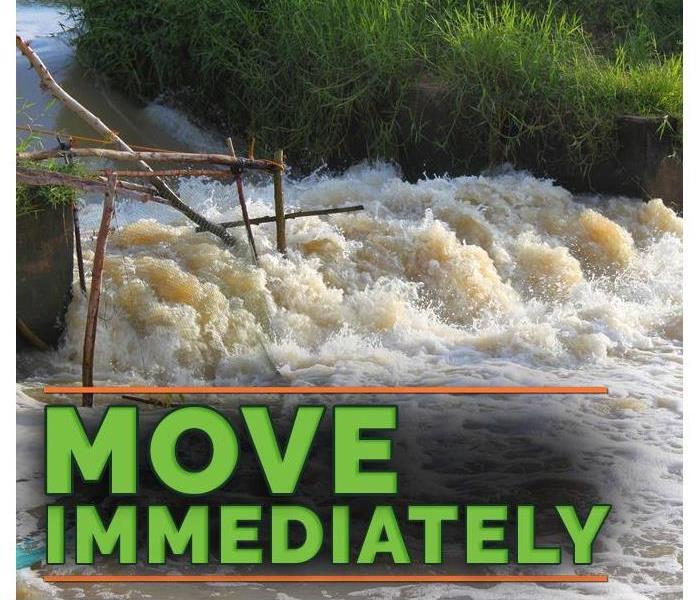 If there is a chance of flash flooding, move immediately to higher ground.
If there is a chance of flash flooding, move immediately to higher ground.
Four Ways To Protect Your Building
Some businesses operate in designated flood zones, but even if you do not, there is always the possibility of flood damage. The key to limiting the extent of the damage is to understand how to prevent it in the first place. While a storm remediation professional in Buckingham, PA, may have a more extensive list of suggestions, the following four ways to protect your building is an excellent place to start.
1. Elevate Items Above Flood Levels
The primary objective of protecting your business from storm damage is to be aware of the possibility of an impending flood. Most forecasters will offer suggestions of flood depth and likelihood. If you know how deep a flood may be, then make sure to raise all sensitive equipment and files above that threshold. If your company has a second floor or attic space, consider temporarily moving items to these locations.
2. Build Temporary or Permanent Barriers
Another excellent way to avoid flood damage is to construct temporary barriers out of earthen materials, like sand or soil. Piling bags of sand is a common tactic against rising waters. Again, make sure that the barrier you create is higher than the projected flood levels. Some companies may also find it beneficial to build permanent walls, using landscaping or humanmade materials to defend against the possibility of a flood.
3. Install Flood-Proofing Equipment
Sometimes, the greatest defense against flooding, especially minor floods, is the use of flood-proofing equipment, like sup pumps and backflow valves. Installing plumbing equipment can ensure your facility stays dry, but you may want to consult with a plumbing professional to discuss the most beneficial options.
4. Move or Build Elsewhere
While not a viable option for every business, moving to higher ground or building in a dryer climate are the best options for protecting your company against possible floods. You can review flood zone maps to find the locations to avoid.
No business owner wants to deal with flood damage. Contact a local mitigation company to discuss preventative options.
Top 5 FAQs About Flood Insurance
8/19/2020 (Permalink)
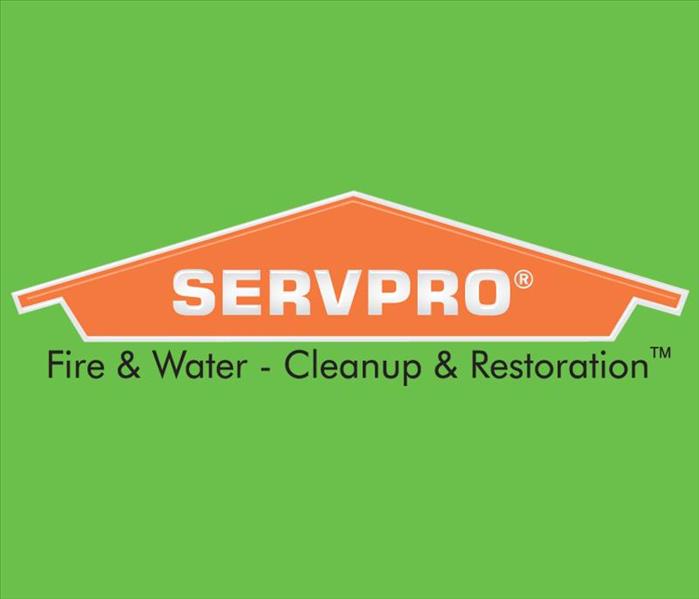 Water damage can quickly cause subsequent issues if it's not resolved quickly.
Water damage can quickly cause subsequent issues if it's not resolved quickly.
Preparation is key when it comes to protecting your commercial business from natural disasters, such as floods, heavy rain, and high winds. There's no telling when or where a flood could occur, so the best way to make sure you're protected is to purchase flood insurance. Study the following frequently asked questions regarding commercial insurance to help keep your building in Doylestown, PA, safe.
1. Is Flood Coverage Mandatory?
All commercial business owners are required to purchase a separate insurance policy if their building is located in a high-risk flood area. This is especially so if you have a mortgage from an insured or federally regulated lender.
2. What Does The Insurance Policy Cover?
Your policy protects you from flood damage to your building and the property within it. The cause of the flood typically doesn't matter; it can be from heavy rains, overflowed rivers, snowmelt, blocked drainage systems, or anything else. In order to be considered a flood, however, the water must affect at least two different properties or cover two total acres.
3. Does Flood Coverage Protect You Right Away?
Flood insurance typically has about a 30-day waiting period before it comes into effect. It's best that you obtain a policy as soon as you can so you're protected.
4. How Much Money Does Your Policy Give You?
Commercial insurance policies against floods normally can grant you about $500,000 to cover the building itself, along with an additional $500,000 for the building's contents.
5. Is Mold Covered in the Flood Policy?
Flood coverage policies only insure against mold growth if it was a result of the flood itself. Because of this, mold coverage is typically a case-by-case basis. Any mold that was there before the flood is not covered.
Water damage can quickly cause subsequent issues if it's not resolved quickly and obtaining a flood insurance policy can help keep your business afloat in the event of a disaster. Contact your local storm remediation experts for more information regarding commercial insurance and other flood coverage policies.
Maintaining a Sump Pump
8/11/2020 (Permalink)
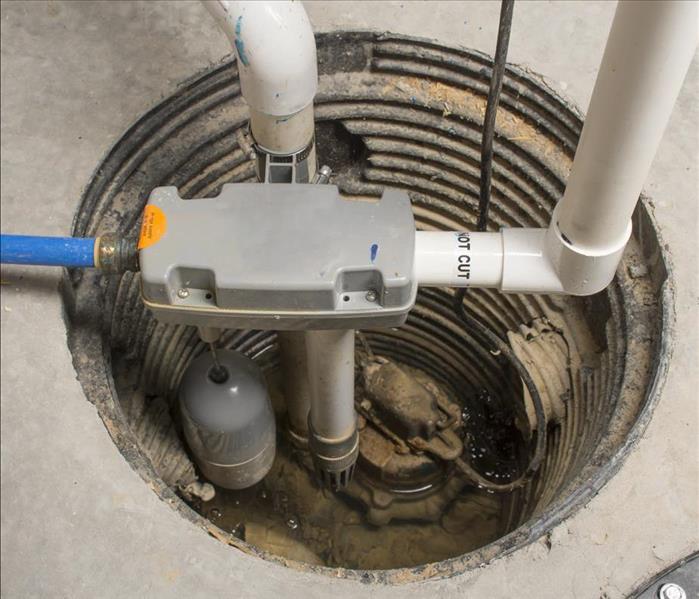 A sump pump can be a great way to get rid of excess water during heavy rains and flooding
A sump pump can be a great way to get rid of excess water during heavy rains and flooding
Pump Maintenance
Many people install a sump pump if they live in an area with high water tables, such as New Briton, PA, have poorly draining soil, or have cracks in their home's foundation. Additionally, many homeowners who live in high-risk flood zones install these pumps in preparation for any flooding. These machines will spit any excess that enters your basement out into your yard and prevent you from having to worry about the costs of flood damage and cleanup. Because they have such unusual operating schedules, it is necessary to perform regular pump maintenance to keep your appliance working at peak performance.
Every 3-4 Months
It is a good idea to run through a simple series of tests every three or four months to make sure that your pump is still operating at its best. The tasks you should perform include:
- Cleaning the pump inlet screen
- Checking the power cord for nicks or kinks
- Testing the outlet to make sure the pump has electricity
- Dumping a bucket of water to raise the float and make sure the pump drains properly
Every Year
Once per year, you should perform a more thorough examination of your machine. Begin by removing your pump from where it has been submerged. Thoroughly clean both the machine and the hole in which it was submerged. While you have the pump out, check the owner's manual to see if you should grease or oil the bearings. If so, follow the instructions in the manual to complete this task properly. When you have finished, put the pump back into the hole where it normally sits. Since you are already working on your sump pump, this may be a good time to perform your regular tests to make sure the pump still works properly.
A sump pump can be a great way to get rid of excess water during heavy rains and flooding. However, it is important to perform regular checks and maintenance to ensure that your machine keeps working at peak performance.
How To Protect a Damaged Roof
4/28/2020 (Permalink)
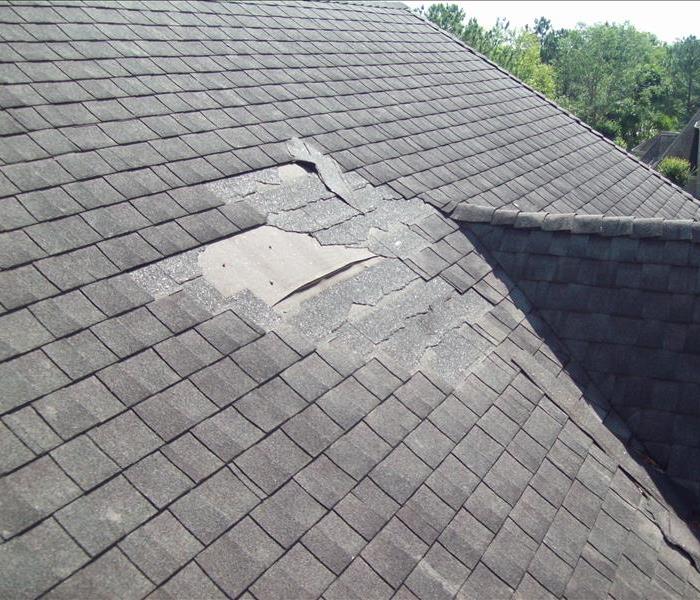 High winds can tear off shingles from your Chalfont, PA building
High winds can tear off shingles from your Chalfont, PA building
How To Protect Your Roof and Limit Secondary Damage
Severe weather is a leading cause of roof damage in Chalfont, PA. High winds tear off shingles or loosen flashing. Fallen tree limbs and flying debris can also damage materials and create punctures that lead to leaks. Homeowners should take the following measures as soon as possible to protect a damaged roof and limit secondary damage.
Determine the Extent of Damage
The first step toward protecting a roof is to identify the damage. While a homeowner may be able to perform a casual inspection, a roofing expert or residential storm damage specialist can point out signs that may be less evident. Here are a few of the most common types of damage caused by severe storms:
- Damaged shingles
- Missing shingles
- Loose or missing flashing
Shingles that are bruised, cracked, or ceased or show signs of granule loss may be more likely to leak. Wind damage may result in loose or missing shingles or flashing.
Tarp Over Holes or Punctures
Major roof damage can immediately result in leaks. Homeowners should hire professionals to tarp over any impact damage or damaged roofing materials. Performing this process successfully requires at least two people and supplies that may not be readily available at a residence.
Schedule Emergency Roof Repair
Homeowners should schedule roof repair as soon as possible. A professional tarp job should last up to 90 days. The sooner a roof is repaired, the lower the risk that a tarp will become loose or damaged during a storm.
Tarping over roof damage is the best way to keep water out until a repair can take place. If a roof has already started to leak, a homeowner should take steps to mitigate damage until the roof is fixed and storm restoration can begin. Regular roof inspections can minimize the risk of damage to the roof and structure of a residence in Chalfont, PA.
3 Things To Know About Commercial Generators
4/3/2020 (Permalink)
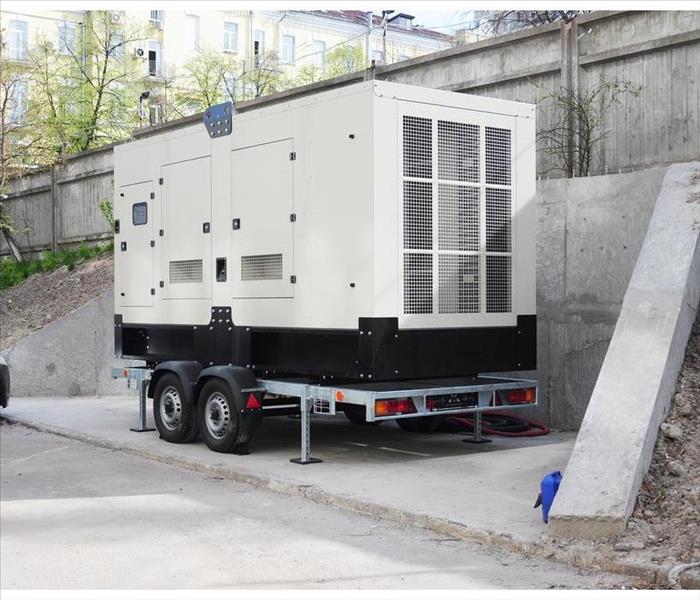 Having a generator for your place of business can be a good investment
Having a generator for your place of business can be a good investment
3 Things To Know About Commercial Generators
If you have a business in Chalfont, PA, you may want to look into investing in a commercial generator in case of a power outage. When choosing which model to use for your company, there are a few things you may want to consider.
1. How To Maintain the Unit
It’s important to properly maintain the unit to avoid generator problems. This may involve regular cleaning and inspections as recommended by the manufacturer. To ensure reliable operation it’s best to contact a professional for any service the unit may require.
2. They Can Be Used in a Variety of Situations
Choosing a generator for your business can be an important step as it can provide electricity in a number of circumstances that may cause a power outage. This can occur after heavy rains or flooding, or if the city grid begins to experience issues for any reason. Generators can also help provide power for a local damage restoration service as the work on restoring the property.
3. How Long To Run the Unit
Many generators are rated to run for up to 3,000 hours, however, you can find units designed with the ability to run longer. In most cases, this amount of time won’t be necessary as you will only need to use the machine for daily operations until the power can be restored to your building. This means you may be able to expect many, many years of operation life out of the unit you choose for your company.
Having a generator for your place of business can be a good investment. When you know how to properly maintain your unit, these tools can be useful in a variety of ways. They can provide power for restoration crews or business operations after a heavy storm, and depending on the unit chosen should be able to handle a whole day’s work.
Techniques for Removing Mold From a Crawlspace After Storm
3/25/2020 (Permalink)
 Contents of the home such as clothing, furniture, and other materials may have to be sanitized as well.
Contents of the home such as clothing, furniture, and other materials may have to be sanitized as well.
It's no secret that mold likes to inhabit the hidden, damp spaces of a home. This includes basements and attics, shower rooms and other nooks and crannies where moisture is more likely to be present. A home crawlspace is an area where mold can grow, often without the detection of the homeowner in Doylestown, PA. If you suspect mold in your home, because of a moisture problem or the presence of a musty odor, a mold remediation franchise can come to the property and conduct an inspection and damage assessment. Technicians will use special equipment such as infrared cameras to find mold growth that might not be visible.
Mold in a Crawlspace
This area of a home introduces a number of problems to the mold cleanup process. If left untreated, significant mold damage is likely to occur to the walls and flooring. One effective technique is known as mold soda blasting. Here's how it works.
The area is inspected to see if mold is present.
High-pressure soda blasting is used to clean the infected areas
The baking soda along with other chemicals thoroughly cleans the wood
The area is vacuumed and cleaned to remove mold spores
This method is faster than scrubbing the area clean by hand. It also uses chemicals that are safe.
Mold in Other Areas of the Home
If flooding has occurred in your home, the growth of mold is a possibility. It is a good idea to check in likely areas for the appearance of mold colonies or for the presence of a musty odor. If you cannot access your crawlspace, be sure to call in a company to do it for you if you suspect mold growth. If mold is found, the next step will be mold containment and then the cleaning of all infested areas. Contents of the home such as clothing, furniture, and other materials may have to be sanitized as well.
Basic Items for a Business First Aid Kit
3/23/2020 (Permalink)
 These are some of the necessary items to place in a company first aid kit.
These are some of the necessary items to place in a company first aid kit.
At your workplace in Doylestown, PA, it's a good idea to always be prepared. Thorough precautions pay off when an emergency or other urgent situation arises. For example, unexpected storm damage can cause injuries such as abrasions and lacerations to employees or other persons on the property. Minor injuries can even happen when carrying out everyday tasks. Keeping a first aid kit on hand can help treat less severe injuries and stabilize more serious ones until assistance arrives. Every business should keep some basic emergency items on the premises.
Bandages
One of the most important and useful things to have in your emergency kit is bandages. Since there are different types of dressings, include a variety of kinds and sizes:
First aid bandages for covering minor cuts
Butterfly bandages for deeper incisions
Large bandages for extensive wounds or deep cuts
These bandages should be sufficient to help with the majority of cuts. While deep or large wounds may require stitches, these dressings can help minimize bleeding until further medical care arrives.
Disinfecting Sprays or Creams
Including a disinfecting ointment in your first aid kit is important for treating cuts. Because lacerations have open skin, they can leave the victim susceptible to infection. Putting an antibacterial ointment on the cut before covering it with a bandage can help prevent infection. A spray may be more practical for a larger wound.
Cold and Pain Medications
While a cold or a simple headache rarely requires medical attention, it can make the day more miserable. Pain medications, as well as cold medicines, can prove useful when employees or other persons are feeling unwell. You may also want to keep antacids on hand for times when someone is experiencing an upset stomach.
These are some of the necessary items to place in a company first aid kit. Having this gear on hand can be particularly useful after experiencing a storm or flood damage. After the weather event has passed, you should contact a storm damage restoration team to assess and repair any destruction that your business sustained.
Top 3 Roof Maintenance Tips For Commercial Buildings
3/14/2020 (Permalink)
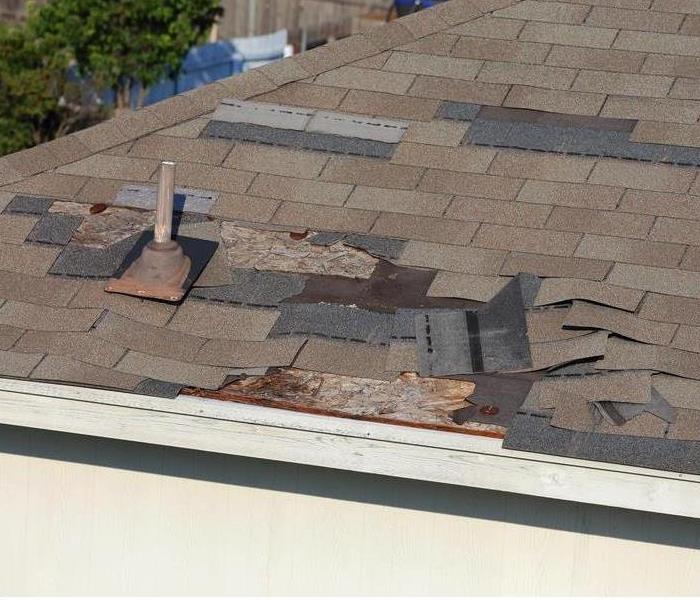 A roof leak is, undoubtedly, one of the most annoying things you can deal with as a business owner.
A roof leak is, undoubtedly, one of the most annoying things you can deal with as a business owner.
The roof is one of the most expensive parts of any structure for a good reason. It plays a big role in protecting your stuff from the elements while adding aesthetics to the overall design. That's why you need to show it some love to avoid a roof leak and other nasty surprises.
Here are the top 3 roof maintenance tips for commercial buildings in Doylestown, PA:
Clean gutters
Clear drains
Have regular inspections
1. Clean Gutters
Gutters are supposed to direct stormwater away from the building to prevent water damage and flooding. If the fixture is blocked, you run the risk of having a nasty ceiling leak or water-logged walls. That can escalate to a flooded electrical system, and things could head south from there. The water could also seep to the foundation and threaten the building's structural integrity. Therefore, cleaning the gutter will help prolong the life of your house.
2. Clear Drains
After cleaning the gutters, head straight to the drain and make sure the system delivers water to the waterway flawlessly. That will make sure the water gets off your roof shortly after landing there, minimizing the risk of leaking. The last thing you want to is to experience a drain backup on a flat roof in the middle of a torrential downpour.
3. Have Regular Inspections
A roof leak is a professional level problem that should never be attempted by an inexperienced DIYer. Walking on an old roof can be quite dangerous, and you also risk worsening the situation. For these reasons, it is advisable to have a roofing expert inspect the wind damage and fix any problems before they get worse.
A roof leak is, undoubtedly, one of the most annoying things you can deal with as a business owner in Doylestown, PA. It can cause water damage that could cost thousands of dollars, and that is never a good thing for a small business. Luckily, these tips will help you avoid this disaster.
Things Every Property Manager Should Know Before the Big Storm
3/11/2020 (Permalink)
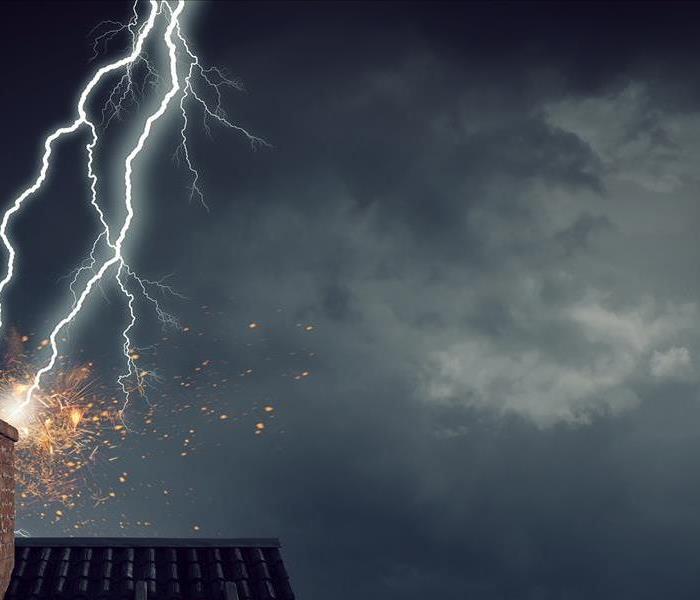 Storm preparedness is an essential part of a property manager's job.
Storm preparedness is an essential part of a property manager's job.
After hurricanes or severe weather, people are used to seeing the calamity and the storm restoration companies from Doylestown, PA, attending to the cleanup. However, as a property manager, your job is about storm preparedness and how to minimize damage and risk. There are five areas that every property manager should be familiar with.
Personnel safety and preparation
Building preparation
Emergency contacts and responsibilities
Data and files
Reports
Personnel Safety and Preparation
Every property manager is responsible for the care and safety of the employees and clients under their roof. You must have or develop evacuation and shelter-in-place plans for your building. Also, it is a good idea to run routine drills, so everyone in the company and facility is aware of storm and disaster protocols.
Building Preparation
Property management is also about building preparation before a storm, ensuring minimal damage. If hurricanes or other high wind events are predicted, then board up windows and vulnerable doors.
Emergency Contacts and Responsibilities
Also, having a list of emergency contacts and delegating responsibilities is part of storm preparedness. For example, managers of each department should be charged with counting heads before, during and after an event. Also, each manager should have a list of contacts for people that need to be notified after a company disaster.
Data and Files
Data and files are often overlooked during the panic of storm preparations, but this information is vital to the sustainability of a company. Make sure that you or someone on staff is responsible for backing up all critical data and files.
Reports
Once the storm is over and panic subsides, you will likely need to create several reports. For example, inventory may need to be checked and reported to execs and insurers. There are likely to be other reports about damages and emergency response as well.
Storm preparedness is an essential part of a property manager's job, as is the care and safety of those who work under you. If you need assistance in developing storm preparations, contact your local first responders or a storm mitigation company.
Remove Odors After a Storm
3/9/2020 (Permalink)
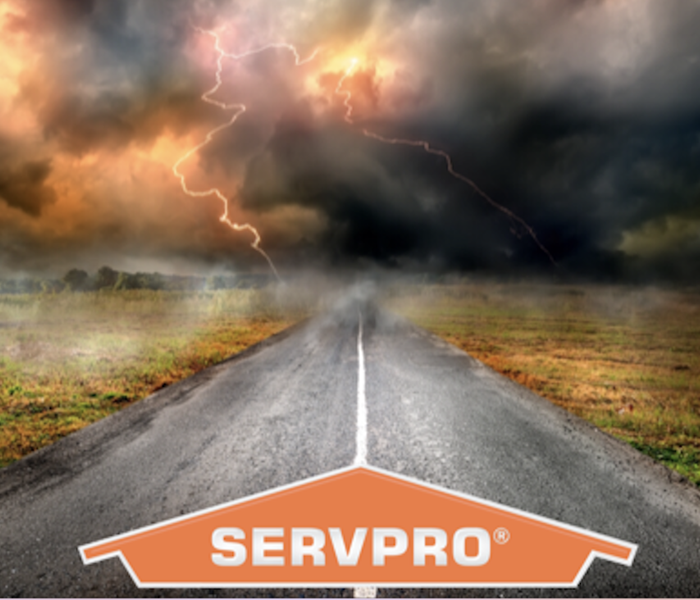 Effective cleaning, sanitizing and deodorizing are the hallmarks of cleanup that has been well done.
Effective cleaning, sanitizing and deodorizing are the hallmarks of cleanup that has been well done.
A big storm is likely to result in a number of problems for your company. It happens just about every day somewhere in the U.S., and at some point Doylestown, PA, it will face its day of reckoning. One sure side effect of a major storm is a number of unpleasant odors, caused by a number of things. In fact, your nose will often lead you somewhere that needs attention. For example, mold growth, a common occurrence after a storm, usually gives off a musty unpleasant odor. This is a situation that demands immediate attention. Mold containment and cleaning and deodorizing will be needed as soon as possible.
Other Odors
In addition to mold growth, a medley of smells often plagues a commercial building after a storm. Here's a shortlist of a few smells that may be present in the hours, days or weeks after a damaging weather event:
The bathroom smell from a sewage loss
The musty odors of wet furniture
The stale aroma of wet paper products
The offensive odor of spoiled food
Improper or insufficient cleaning simply mask smells, and this course of action is doomed to failure. The smells will return. With the right equipment and methods, a professional storm damage team is able to remove odors from floodwaters without a trace. The key is attacking the source of the smell.
Additional Issues
A big storm has the capacity to wreak serious havoc. Each situation is different, and it's hard to say exactly what problems will crop up. It could be electrical damage, plumbing issues, property damage, mold growth, or water damage. If unsavory odors remain long after the storm, this is an indication something is not right. Everyone wants to work in a clean and healthy environment.
Effective cleaning, sanitizing and deodorizing are the hallmarks of cleanup that has been well done. Afterward, the only odors that should remain are pleasant ones.
Dealing with Black Water After a Flood in Your Building
2/21/2020 (Permalink)
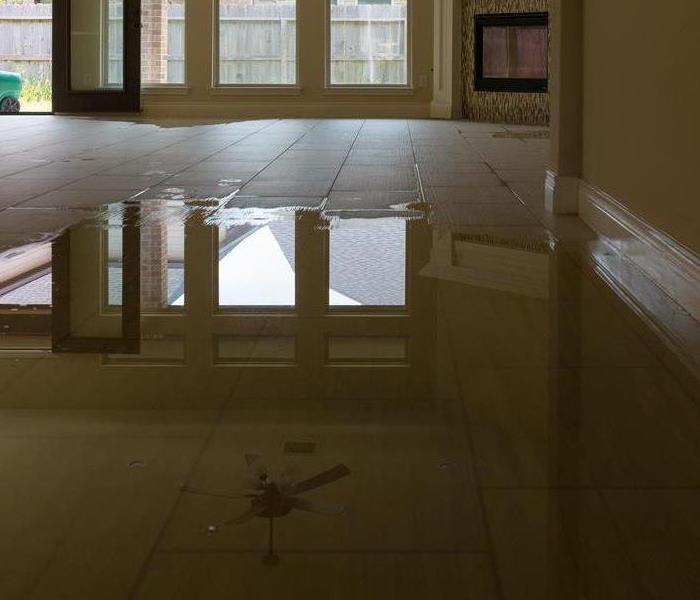 Get the help necessary to ensure a healthy restoration and you can be up and running again.
Get the help necessary to ensure a healthy restoration and you can be up and running again.
When you have water damage in your commercial building in Doylestown, PA, due to a storm flood or sewer backup, you have to be especially careful due to the possibility of contamination. Black water is among the most serious flood cleanup to deal with. It carries with it a greater need for proper cleaning and more serious risks.
What is in Black Water
Water that comes in from storm flooding or a sewer problem carries contaminants that can cause great harm and poses health risks. Anything it touches is considered as having storm damage. Here are a few of the possible threats contained in black water.
Raw Sewage and anything that may have been flushed down a toilet
Cysts
Bacteria
Industrial chemicals and fertilizers
Toxins
Black Water Cleanup
Clearly, there is no place for any of these elements inside your building. You should make sure all employees, customers, and others stay well away from the water damage. Rubber boots and special suits and gloves must be worn during storm cleanup to prevent the spread of contamination. That is why it is necessary for a water remediation and flood damage company to undertake the cleanup.
Industrial cleaners and disinfectants must be used and any porous materials, such as carpet or furnishings will likely need to be discarded.
Non-porous surfaces may be cleaned and disinfected even with flood damage, and possibly reused. Building materials such as sheetrock will likely need to be torn out and replaced. Wooden studs will need to be evaluated and may either be cleaned or may need to be torn out. Regardless of the contamination factor, the subfloor will need to be replaced.
Water damage is hard enough to deal with, even when it is a clean water flood, but when it comes from dirty water, care should be taken with the storm cleanup to ensure it is clean and disinfected. Get the help necessary to ensure a healthy restoration and you can be up and running again.
Winter Storm Harper
1/18/2019 (Permalink)
Winter Storm Harper is predicted to pile on snow and ice from Friday well into the weekend to areas that have, up until now, only experienced some mild winter weather, according to Weather.com.
Winter Storm Harper’s trajectory is still uncertain at this point, however, predictions have the storm moving through the central states and into the Northeast, bringing heavy snow to the Plains, New England, Pennsylvania and New York State in particular.
There will also be a small, weak weather system on Wednesday that will bring some rain and light snow to the Midwest and Northwest, according to Weather.com. But after this system clears, Winter Storm Harper will bring much more extreme conditions.
Here’s what to expect, according to Weather.com:
On Thursday, Harper will bring snow into the Rockies, Sierras and Cascades, then spread into the Northern Plains by nighttime. On Friday, the Rockies will continue to have snow, but so will the Plains — possibly even escalating to blizzard conditions.
By Friday night, the lower Great Lakes, Kansas, parts of Oklahoma and the Texas Panhandle may see some snow, or possibly a snow/rain mix, Weather.com reported. Sleet and freezing rain should be expected for northern Missouri and southern Illinois.
On Saturday, the Northeast gets its fair share of the storm. Heavy snow will be falling in some areas of the Plains still, plus the Midwest and Northeast. People in the Midwest should hunker down for possible blizzard conditions, as strong winds may also be present, said Weather.com.
Be sure to keep an eye on your local weather to ensure a safe weekend!
Content by: https://www.travelandleisure.com/travel-news/winter-storm-harper-heavy-snow-northeast
SERVPRO becomes big around the nation in disaster restoration
7/3/2018 (Permalink)
 Members of the SERVPRO of Whitemarsh/Doylestown franchise. Photo by Gene Walsh / Times Herald Staff
Members of the SERVPRO of Whitemarsh/Doylestown franchise. Photo by Gene Walsh / Times Herald Staff
Copied from an article in the Times Herald Newspaper
By GARY PULEO
gpuleo@timesherald.com">gpuleo@timesherald.com
Posted: 09/07/11, 12:01 AM EDT | Updated: on 09/07/2011
WORCESTER - When it comes to “Dirty Jobs,” Mike Rowe has nothing on Andreo DiPrinzio. He may not be the star of his own TV show, but the owner of SERVPRO of Whitemarsh/Cheltenham gets a major rush from diving in to the muck and the mold when a large-scale cleanup job is in order. Clearing the decks after one of Mother Nature’s virulent tantrums is what brought DiPrinzio and his “minutemen” to the Poconos in late August. Lightning had severely damaged the roof of Swiftwater Elementary School, and SERVPRO’s job was to reinstate a normal environment in time for the first day of School on Aug. 29. It was the kind of disaster restoration that DiPrinzio thrives on, he admitted by phone after a few days of being knee-deep in the wreckage. “I love this stuff,” DiPrinzio said. “I got the call on Monday from the host office, so you just have to react. We call ourselves the “minutemen’ at times like that. You tell your wife and kids, I don’t know how big the project is or how long I’ll be gone. In my industry you have to take these things when you can because you’ll be lucky to go on two of these a year. Last year alone I worked in six states and was personally on the road for two months. We’re working against the clock to get this Swiftwater job done,” he added, “And if we have to ramp it up to a third shift, we will.”
SERVPRO of Whitemarsh/Cheltenham, which DiPrinzio launched 15 years ago, is part of a nationwide system of more than 1,500 franchises, which includes DiPrinzio’s second location, SERVPRO of Doylestown. Though the Whitemarsh/Cheltenham designation signifies SERVPRO’s geographical territory, DiPrinzio runs his flagship operation from a family property in Worcester called Abruzzi Farm. “If the host office gets a job, no one can handle a big job with 200 people that you need done in five days, so they call in the franchises,” DiPrinzio said. “It looks like all the work here is being done by SERVPRO of Monroe County, but technically there are close to nine franchises all working together on this building.” The Swiftwater project, which DiPrinzio estimated would cost $1 million, was not the typical “bread and butter” job that SERVPRO deals with on a regular basis, he noted.
“A typical job is between $3,000 and $5,000,” said DiPrinzio, who also owns DiPrinzio Building & Development Co. “A pipe breaks in your house from the hot water heater and pours water all over the floor. We’ll come in and cut up the carpet and spray for mold and mildew. Most other outfits just come in and suck water and don’t get involved in the construction, but because of my home building I contract out other repairs to my own company to take care of the whole job.”
Besides fixing up monumental messes, SERVPRO is also cleaning up in the numbers game as well. The company was recently recognized at a national convention for hitting the million-dollar mark in revenue. “It was the third time we went to a million dollars,” said DiPrinzio, a Bishop Kenrick graduate. With the Swiftwater Elementrary School project still in full swing, his services were being booked to mend destruction in the wake of Hurricane Irene. “I got an email from an insurance company that said we will pay you to mobilize so that once the hurricane hits you can start serving us exclusively for any damages that we have,” he said. “After 15 years my back is broken, and you won’t see at a small $2,500 job. I’m personally committed to going to the large losses now. It’s what I give to my company, for lack of a better word.”
Hurricane Preparedness in Our Area
5/30/2018 (Permalink)
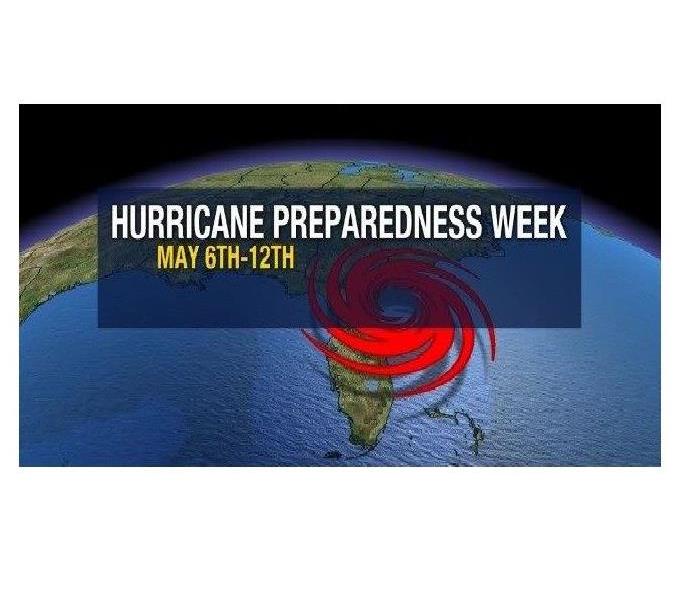 National Hurricane Preparedness Week May 6-12
National Hurricane Preparedness Week May 6-12
Hurricane Preparedness - Be Ready
While we are not located close enough to the ocean to feel a hurricane’s full effect on a regular basis, hurricanes always pose a wind and water damage threat to our property. Two keys to weather safety are to PREPARE for the risks and to ACT on those preparations when alerted by emergency officials. According to the FEMA, we can prepare for a hurricane by following this four stage guide:
Gather Information
Know if you live in an evacuation area. Assess your risks and know your home's vulnerability to storm surge, flooding and wind. Understand National Weather Service forecast products and especially the meaning of NWS watches and warnings. Contact your local National Weather Service office and local government/emergency management office. Find out what type of emergencies could occur and how you should respond.
Contacts
Communications is important during a weather emergency. Keep a list of contact information for these resources:
Emergency Management Offices, County Law Enforcement, County Public Safety Fire/Rescue, State, County and City/Town Government, Local Hospitals, Local Utilities, Local American Red Cross, , Local TV Stations, Local Radio Stations, Your Property Insurance Agent
Plan & Take Action
Everyone needs to be prepared for the unexpected. Your friends and family may not be together when disaster strikes. How will you find each other? Will you know if your children or parents are safe? You may have to evacuate or be confined to your home. What will you do if water, gas, electricity or phone services are shut off?
Supplies Kit
Put together a basic disaster supplies kit and consider storage locations for different situations. Help community members do the same.
Emergency Plans
Develop and document plans for your specific risks. Protect yourself and family with a Family Emergency Plan. Be sure to plan for locations away from home. Pet owners should have plans to care for their animals. The Centers for Disease Control & Prevention offer information on animal health impacts in evacuation shelters.
Evacuation
Review the FEMA Evacuation Guidelines to allow for enough time to pack and inform friends and family if you need to leave your home. FOLLOW instructions issued by local officials. Leave immediately if ordered!
Consider your protection options to decide whether to stay or evacuate your home if you are not ordered to evacuate.
When waiting out a storm be careful, the danger may not be over yet. Be alert for Tornadoes, as they are often spawned by hurricanes. The calm "eye" of the storm – it may seem like the storm is over, but after the eye passes, the winds will change direction and quickly return to hurricane force.
Recover
Wait until an area is declared safe before returning home. Remember that recovering from a disaster is usually a gradual process.
Resources
Here are some additional resources for Hurricane Preparedness
- Refer to the Federal Emergency Management Agency's (FEMA) gov/hurricanes for comprehensive information on hurricane preparedness at home and in your community.





 24/7 Emergency Service
24/7 Emergency Service



















